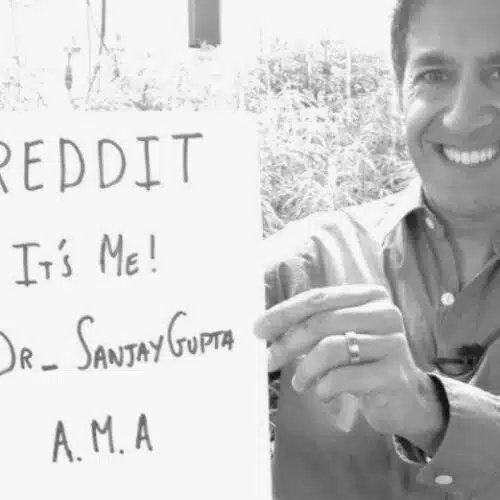Medical Marijuana as Disease-Modifying Therapy?
Naturopathic Doctor Michelle Sexton discusses the Endogenous Cannabinoid System from the perspective of pain management, inflammation, and toxicity, and how dis-ease may be modified by the use of Phytocannabinoids.
By Dr. Michelle Sexton | September 26, 2011
Inflammation and Neuroinflammation
Who would have thought that the brain can get inflamed? Haven’t we been schooled on a ‘Great Wall of China’ (the blood/brain barrier) that protects the brain from outside invaders?
Neuroinflammation was a term scarcely used prior to 1995, but now is a prime culprit in disorders we hear about daily: multiple sclerosis, Alzheimers, Parkinson, stroke, HIV, prion disease, even depression and epilepsy.
Inflammation is a normal event, but in the case that it becomes chronic, or the usual mechanisms for keeping it in check go awry, there is need to investigate what the persistent stimuli fueling the fires may be (treat the cause, not the symptom).
There are a couple of cells in the brain that have supporting roles to neurons, microglia and astrocytes. In experimental models of neuroinflammation, cannabinoids have clearly demonstrated anti-inflammatory action.
Take the long history of the EAE model of Multiple Sclerosis in the mouse. Administration of cannabinoids has repeatedly been shown to shorten disease course and severity.
There are a couple of ways that this happens: one is by preventing immune cells from migrating into the brain, and by regulating inflammation.
Another is by protecting neurons, having a way of preventing the serious damage that can actually kill them: microglia and astrocytes can help with this. Cannabidiol facilitates this as effectively as synthetic cannabinoids.
So maybe Cannabis is not just for symptom control anymore, but may act as a disease-modifying therapy? This is something that I have been investigating!
Excitotoxicity, oxidative stress and inflammation are all ways that neurons can be damaged, and Pazos Gomez from Madrid, Spain gave experimental details on how this was investigated in a model of ischemia or cutting off oxygen supply to the brain.
Whenever blood supply is short-changed to the brain, there is a concomitant inflammatory response, often upon reperfusion to the affected site. Cannbidiol was shown to provide damage control in this situation.
This has implications for human, including stroke and lack of oxygen supply that can happen during the birth process.
Javier Fernandez Ruiz has been investigating the eCBss in a devastating, progressive, genetic neurological disorder call Huntington’s Disease (HD).
If you ever heard of this, maybe it is because you knew that Woodie Guthrie died of this disease. We know that one of the early events in this disease is a down-regulation of the CB1 receptor in certain compartments of the brain.
This causes a form of “neurotoxicity” in itself, because the role of the CB1 receptor there is to tone down the electrical charge running through a neuron. Because of the animal experiments, a hypothesis that cannabinoids may help human patients is going to be tested.
A group of human subjects that have been diagnosed with HD will be given a “glorified hash oil” (meaning its made by a pharmaceutical company) in what the pharmaceutical industry calls a Phase I trial. These trials are to make sure that there aren’t too many harmful side-effects (may cause drowsiness, depression headache, confusion, constipation, diarrhea, rigidity, tremor, blurred vision or death – seriously this is a disclaimer on an FDA-approved drug!). But anyway, we are all willing to face these things for Cannabis, right?
So I hope that for these patients, a whole plant Cannabis extract may slow the progression of their disease, or at the very least improve the quality of the life they have left to live!
And I can’t conclude this section without a bit of attention on my personal favorite cannbinoid receptor, CB2! Normally the expression in the brain is very low, but when there is any form of inflammation in the brain, expression increases.
This increased expression appears to have a role in the experience of pain, as well, specifically the kind that comes from nerve damage, called neuropathic pain.
And if you didn’t know it, there are many plants (oregano, hops, black pepper, rosemary) that have other compounds that also interact with our eCBss. One that is particularly ubiquitous and is a terpenoid, called beta-caryophyllene, so when a nerve is damaged (in this report, ligation of the sciatic nerve in a mouse).
Andreas Zimmer of Bonn, Germany finds that beta-carophyllene binding to the CB2 receptor attenuated pain in his model.
No need to torture mice though, when there is ample evidence of pain attenuation by cannabinoids in the human model.
Boosting endocannabinoids, by inhibiting the enzymes that degrade them, is another strategy for treating pain.
There are some chemotherapies that cause nerve damage that leads to chronic pain known as peripheral neuropathy (also occurs in advanced diabetes). Boosting endocannabinoids is an effective way to treat this pain in the animal model that Andrea Hohmann told about.
Andrea won this year’s IACM Ester Fride Award. Now how can we do this naturally, without having to pay big pharma? Well avoiding chemotherapy if possible, preventing diabetes by what you eat and how you live and be sure to eat your herbs and spices to tone the endocannabinoid system!



